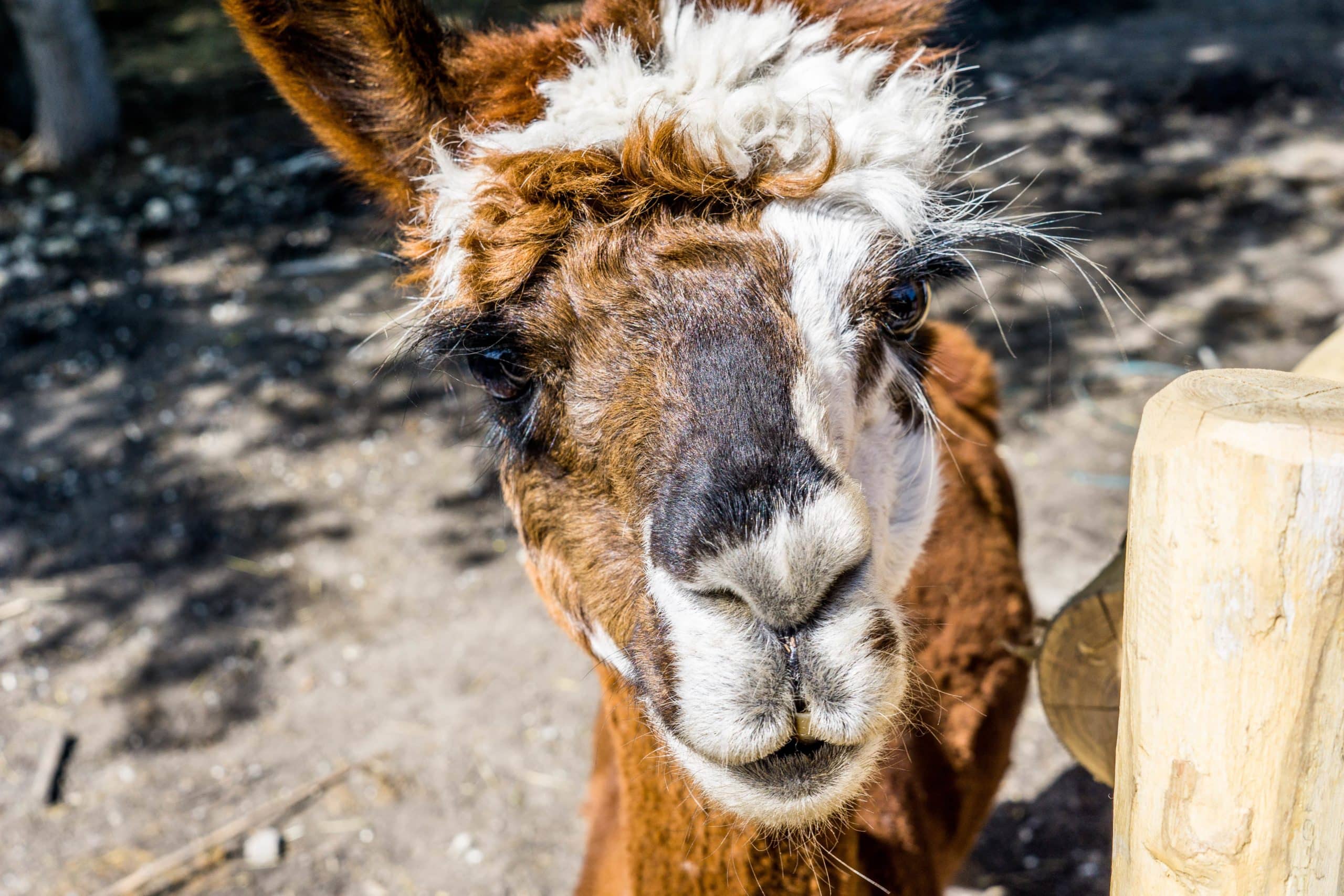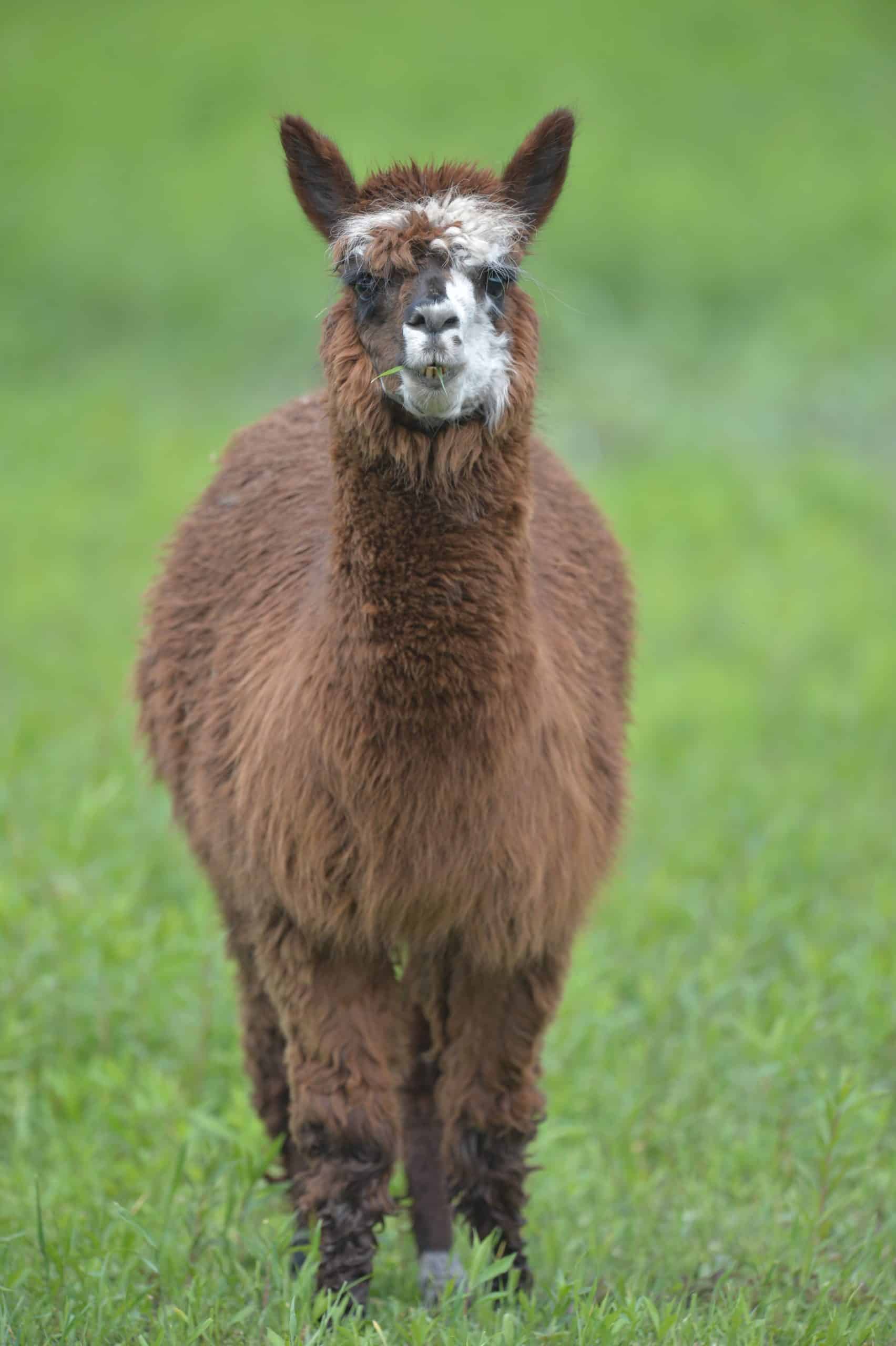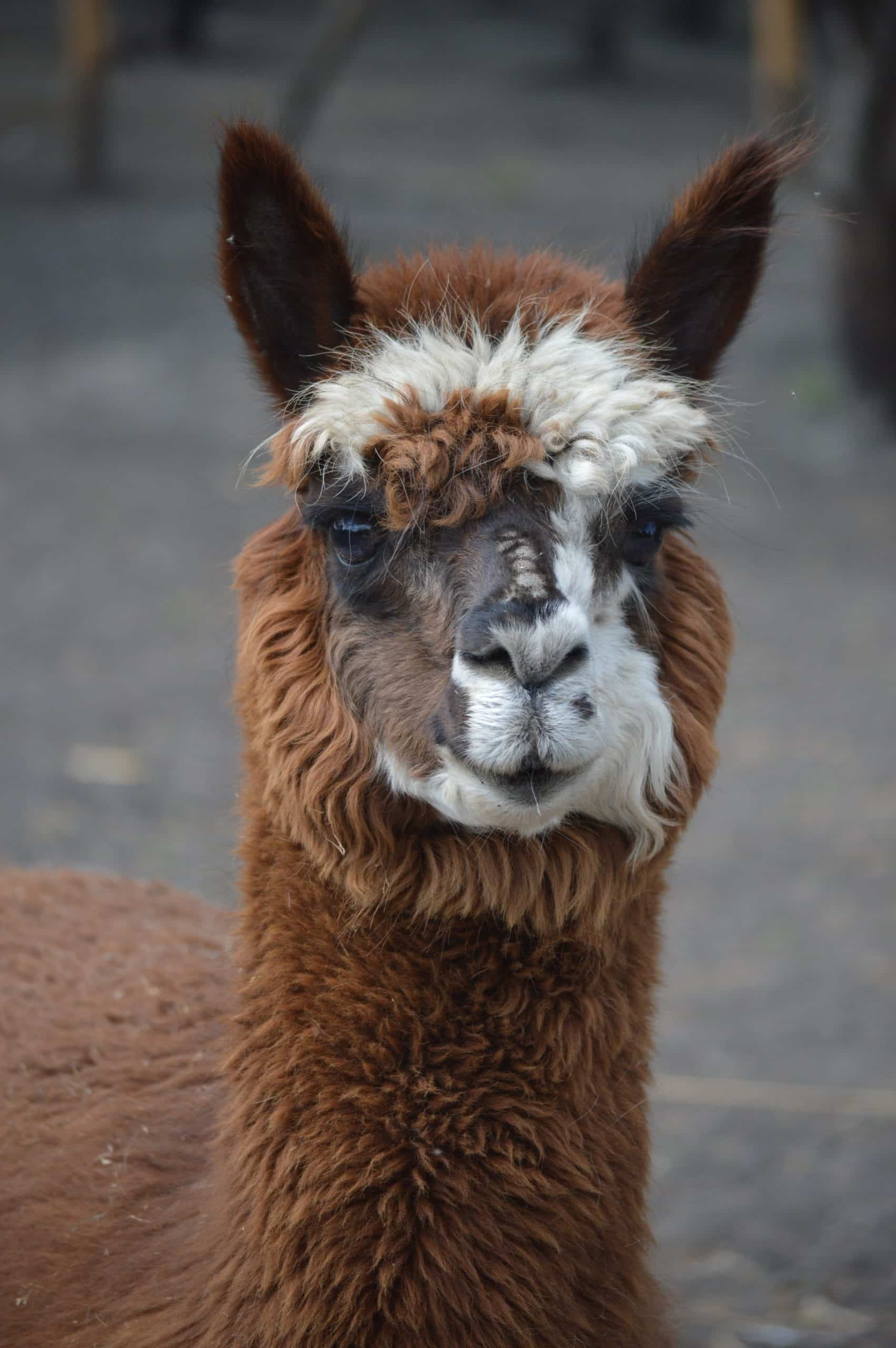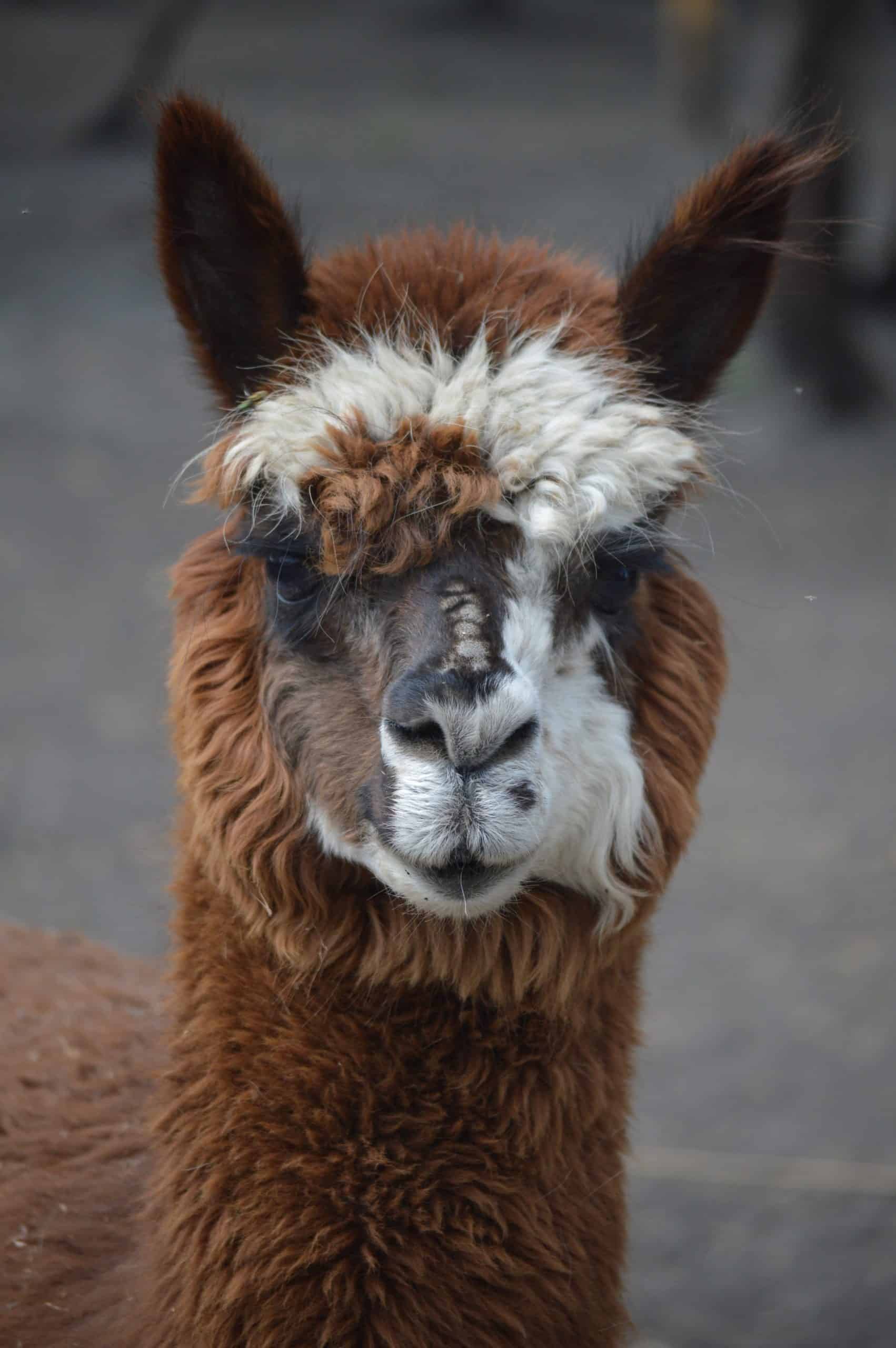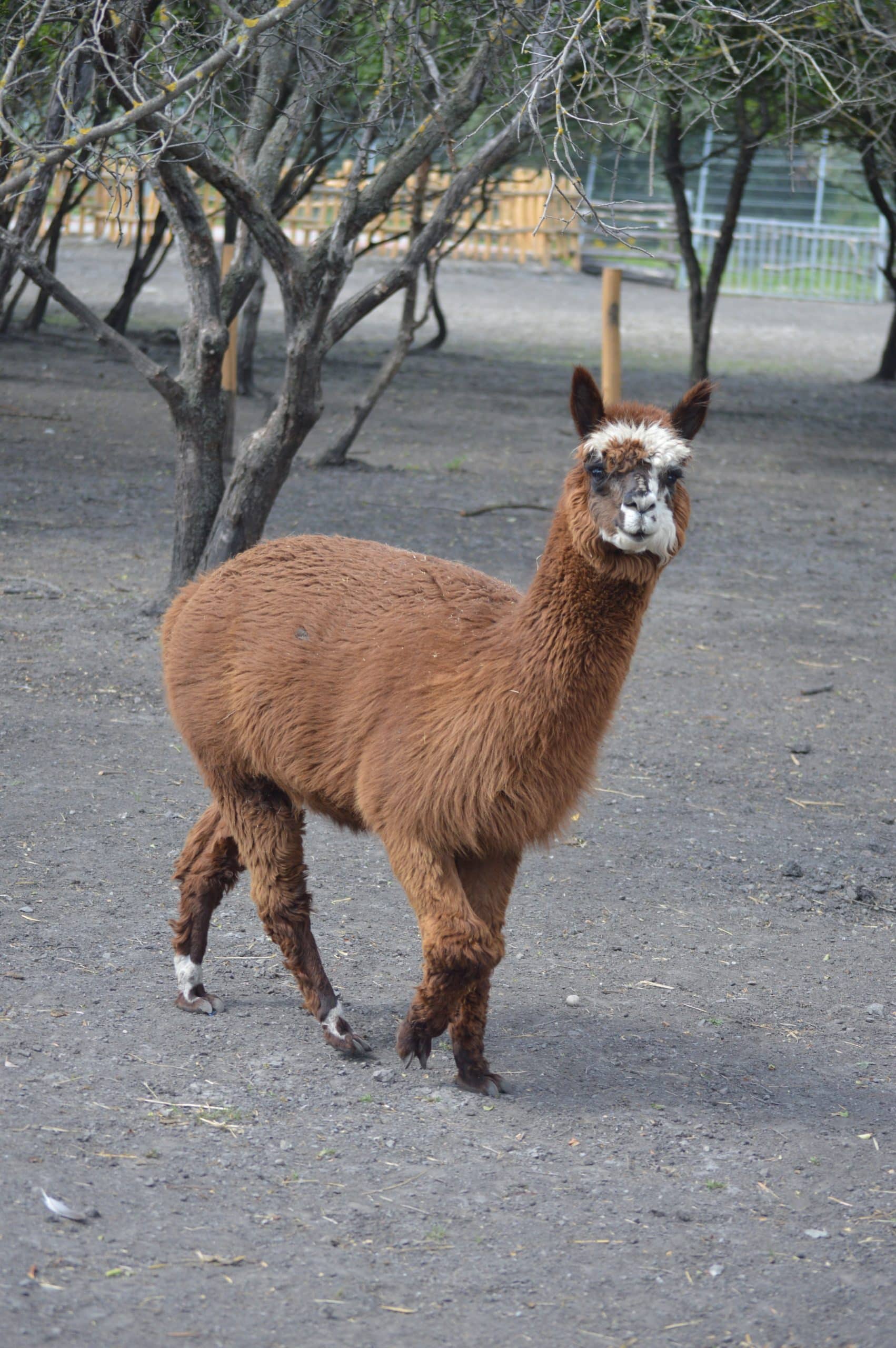The coat is a very fine, even wool. There is almost no difference between the undercoat and the top coat. The wool continues to grow. Thanks to its unusually long coat, it is well adapted to life at high altitudes. The colour varies from pure white to brown black, sometimes with white and brown spots. In a mouth with separated upper lip, it has ever-growing incisors located in the lower jaw, which allow it to graze a wide variety of plants. The young most often have a soft, cream-coloured coat, which gradually darkens.
It does not stand only on the ends of the toes with the hooves, but the flexible callus covering the underside of the three toe links. It can therefore safely walk on rocks, but also on soft ground.
It is a herd animal with diurnal activity.
The birth weight (about 1 kg) increases to 30 kg during nine months of breastfeeding. An hour after birth, the young is able to stand up and walk.
The wild ancestors of the alpaca – the vicuña or vicuna – live in harems made up of an adult male leader, several females, and their young. These harems occasionally aggregate into larger herds. Only the dominant male mates with females, so there are frequent and fierce battles for the position of harem leader. In captivity, humans manage breeding, and they usually keep individuals of both sexes separate and only allow selected males to mate. The female is able to mate almost immediately after giving birth, but they usually have one young every two years. In the semi-wild method of breeding in South America, fertility is relatively low. Miscarriages are very common and many young die almost immediately after birth. This is mainly due to the poor food supply.
There are millions of farmed animals, and their popularity and demand continues to grow.
It belongs to two domesticated species of llamas. The other is the llama.
Alpacas are also kept in the high mountains, where they are the only economic sector that is profitable in the local conditions. There is very poor vegetation, a harsh climate, and relatively thin air.
All members of the camelid family are unique among mammals in having red blood cells that are oval (not round) in shape.
